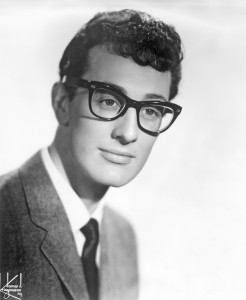
The 1950’s was a dynamic decade for music. The first five years was dominated by crooners and cowboy singers – Crosby, Como, Laine, Mitchell and girl singers Day, Starr, Stafford, Clooney.
Around this time, I was involved with Tara Records in Tara Street. We had the entire building, including a fine apartment over the shop where we entertained many pop stars who played Dublin, including Johnnie Ray, Louis Armstrong, Guy Mitchell and our senior partner George O’Reilly’s great friend Bing Crosby. Indeed, Bing got his friend Nat King Cole to officially open Tara Records.
At this time, I was a fan of American Swing and Jazz Big Bands and had all the latest albums on Decca, Capitol and R.C.A. labels. In the mid-50s nobody was allowed to buy U.S. dollars. This was a time of super austerity shortly after World War II; however, as we had a business we were allowed $200 per year to purchase U.S. stock, which enabled me to buy The Kenton Era direct from Capitol Records on Hollywood and Vine. This was a four-album box set that cost £16.00, more than a week’s salary at that time.
When word got out that I had this album, George Hodnot, who was a music critic at The Irish Times, rang me looking to hear and review the album. I met Hoddy, as we called him, in The Red Shoes, a restaurant in Rathmines near The Stella Cinema. I loaned him the album, to which he gave a glowing review. Some weeks later I met Hoddy in The Band bistro in South Richmond Street. He told me I was one of the few people in Europe to have this album, due to the Europe-wide embargo on U.S. dollars.
Around this time, I would fly to London to hear American Big Bands such as Stan Kenton or Woody Herman at Royal Festival Hall and Count Basie at Kilburn State, which was great fun. I arrived at Kilburn State ticketless and alone, bought a ticket from a scalper or “spiv” and to my utter chagrin my seat was at the rear, miles from the stage. Lucky for me I was seated beside a lovely South African girl who had a set of binoculars and thanks to her I was almost on stage with the Great Count Basie Band.
After the show, I invited her for refreshments. We ended up in a lovely wine bar in Maida Vale, near Marble Arch. We had a great time, got on like a house on fire, sparks were flying and then my new South African girlfriend invited me to stay all weekend in her large apartment in Earls Court and said she would show me some London Jazz Clubs.
We went to Ronnie Scott Club in Frith Street, Soho, and heard some great sounds. On Sunday, we visited The 100 Club in Oxford Street to hear the Humphrey Lyttelton Band with Monty Sunshine and the Future King of Skiffle, Lonnie Donegan. That same night we heard the super Ted Heath Band at The Palladium. A most memorable weekend, indeed.
Meanwhile, back in Dublin in 1956 I noticed our clients at Tara Records had got much younger. The reason for this was the explosion of new music called Rock and Roll, played mostly by young black musicians.
Even the record labels were changing, with names like Sun, Ace, Roulette, Coral, Imperial and dozens more. All these new singers ruled the roost until 1960 when the music scene moved to English bands from Liverpool and London.
What happened to the first wave of U.S. singers, I hear you asking? I would like to give you my take on some of the changes; Johnnie Ace was shot dead so was Sam Cooke, Eddie Cochran was killed in a car crash, Little Richard found religion for some years, Jerry Lee Lewis caused a scandal by marrying his 13-year old cousin, Chuck Berry got two years in jail for bringing a Spanish-speaking Apache prostitute across the state line, Elvis Presley joined the army for two years and the great Buddy Holly and Ritchie Valens were killed in a plane crash in Iowa in February 1959. Don McLean sang about this tragedy in American Pie – he called it “the day the music died.”
The music of the fifties is now on my mind, so I am going to dig out some of my old albums. I’ll start with Fats Domino and his great band of wailing tenor saxophones and finish with Buddy Holly and the Crickets and the wonderful sound of Holly’s Fender Stratocaster guitar. Pardon me, folks, as I sit down, close my eyes and marvel.
Left: Buddy Holly and, below, Elvis Presley during his stint in the US Army.
By Noel Twamley

